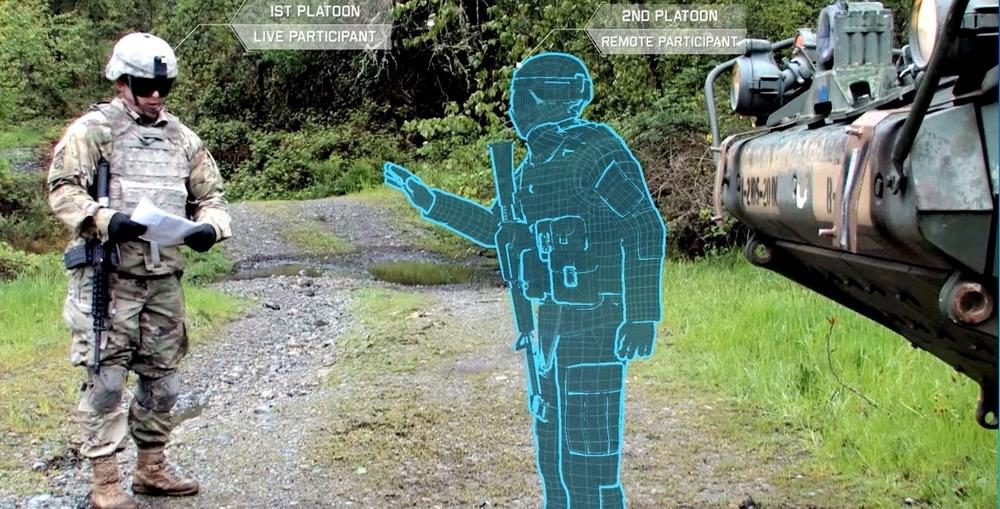Digital Natives: The Inflection Point in Training Next-Generation Warfighters
For the U.S. Department of Defense (DoD), readiness is at a critical inflection point, especially as the DoD moves to face the near-peer threat environment. The time to better integrate immersive technologies in the training life cycle for next-generation warfighters has arrived.
The physical and digital worlds are increasingly blending on the battlefield, demanding a more integrated approach that enhances or complements live training with synthetic and digital solutions. Immersive technologies and wearables accelerate the readiness of warfighters at speed and scale through data-driven and real-time feedback of comprehensive mission and human performance. The proliferation of 5G and edge-computing capabilities in both commercial industry and the public sector has reduced end-user latency and facilitated large data processing in real time, allowing strategic insights to be gleaned from and used by warfighters on the front lines of today’s sensor-rich battlefields.
The Case for Immersive Augmented Training
Most younger warfighters today are digital natives who are more comfortable with virtual worlds and technology-based learning. That said, shifting military culture around immersive technology may prove challenging across all echelons. Resistance to immersive technology often stems from intergenerational gaps and misunderstanding around how digital solutions can put warfighters in the best possible readiness positions.
It's critical to emphasize that immersive tech-based training does not replace live training; it's an important tool that helps empower and enable warfighters and squad leaders to make better decisions and quickly adapt. Its ability to accelerate warfighter readiness while saving time and costs is undeniable. Just a few of the many uses of immersive technology include:
- Immersive technology enables repetitive, risk-free practice with complex equipment and scenarios that would otherwise be impractical, dangerous or expensive in the real world. Virtual ranges allow recruits to hone marksmanship skills and develop crucial muscle memory before ever firing a single live round. High-fidelity simulations train troops to operate specialized gear like counter-drone systems without risking costly hardware or revealing sensitive capabilities.
- Synthetic environments easily facilitate multidomain training, injecting virtual feeds that span cyber, electronic-warfare, space and intelligence assets. Whereas live exercises might focus solely on conventional land and air domains, modern hybrid conflicts require mastering the integration and vulnerabilities of a digitized, sensor-rich battlespace. Thus, part of warfighters’ training must include recognizing when systems are compromised and learning to not become overly reliant on such technology. Through augmented reality displays, soldiers can perceive and counter adversarial spoofing attempts to distort their common operating picture.
- Virtual exercises and repetitions let warfighters start building proficiencies earlier. Following immersive training exercises, units arrive to live exercises, qualifications and real-world missions better prepared from their initial actions. Virtual renderings of current and future battlefields can also incorporate geographic intelligence, map-planning and potential threat scenarios, improving warfighter comprehension of force protection requirements before and/or during deployments.
- Immersive environments can scale quickly to meet the moment, replicating new equipment capabilities and the form, fit and function of fielded systems to compress training cycles and afford a vital competitive advantage. For example, ground forces trained on counter-unmanned aircraft system (C-UAS) tactics by running reps in synthetic environments with virtual and actual systems years before hostile drone threats manifested. When those threats arrived, they were well-prepared to identify and neutralize enemy UAS while avoiding fratricide.

The time to better integrate immersive technologies in the training life cycle for next-generation warfighters has arrived.
Tangible Results
In an era of rapidly evolving multidomain threats in the near-peer environment, the DoD must continue to explore immersive technologies that can revolutionize how warfighters train and prepare for mission success. From virtual reality simulations to augmented reality helmet displays, these cutting-edge tools aim to elevate warfighter proficiency to unprecedented levels. Early adoption is already yielding tangible results.
One standout example allows weapons crews to fire their organic weapons in a virtual battlespace before live training. By replicating the exact firing range used for weapons qualification and syncing the virtual environment to the real systems, entire crews can practice commands and operations. Undergoing multiple virtual iterations first enables units to significantly improve live-fire proficiency while dramatically reducing training time and costs. For example, 18 immersive-tech-trained weapons crews that previously took three attempts to qualify for marksmanship completed live-fire qualifications on the first try after virtual rehearsals. Results like these point toward the transformative potential of immersive tech-based training across all warfighting domains, including land, air, sea, space and cyber.
The Call for Action Is Clear
The U.S. military must embrace and continue to incorporate immersive tech-based training now. Doing so will accelerate force readiness and help troops retain a critical competitive edge against pacing threats. The future of military preparedness is unfolding in bits and bytes. By seamlessly blending virtual and physical training, immersive tech is poised to transform the profession of arms. Mastering new domains in this way will be essential for the current and future generations of warfighters entrusted with deterring, competing and winning across the continuum of conflict.
Cameron Mayer is senior vice president, Booz Allen, and Todd Burnett is an executive adviser, Booz Allen.

The physical and digital worlds are increasingly blending on the battlefield, demanding a more integrated approach that enhances or complements live training with synthetic and digital solutions.




Comments